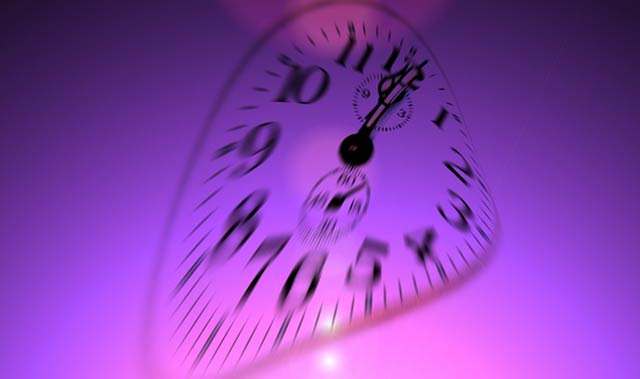
On Wednesday morning at 2am South African time, something chronologically peculiar took place: there was an extra second between 01:59:59 and 02:00:00.
This makes 1 July 2015 (or 30 June 2015 in many other parts of the world) one second longer than the length of a standard day. The culprit is a “leap second”, although it’s far from unique. In fact, it’ll be the 26th one we’ve had since they were first introduced in 1972.
Why do we need to add an extra second to the day? Historically the second had been defined as a fraction of the day: one 86 400th of the total time for the sun to return to the same position in the sky.
That was precise enough for most purposes, but by the early 20th century astronomers had determined that the Earth’s rotation was not constant. It was actually slowing down. This meant that a second defined in this fashion would slowly lengthen over time.
The development of atomic clocks in the 1950s allowed the second to be defined with incredible accuracy, with a variance of only one part in 1014.
Thus was the second redefined in 1967 by the International Committee for Weights and Measures in 1967. It was no longer pegged to the Earth’s rotation. Instead it was defined in terms of a very particular physical property of a caesium-133 atom.
This mechanical definition has disconnected the second from the length of the solar day. In fact, the tables turned and the day was subsequently redefined in terms of this newly established atomic second: 86 400 seconds make up a standard day.
The length of the solar day — or the time it actually takes the Earth to complete a rotation — is no longer precisely as long as a standard day, and it has not been for a century. This is because the Earth’s rotation continues to slow.
The main reason it’s lagging is tidal friction from the moon, which by itself would increase the length of the day by 2.3 milliseconds each century.
However, other geological process on Earth that shift mass around will also have an effect on the rotation rate, since the system must conserve its total angular momentum. This can end up increasing the Earth’s rotation rate as well as decreasing it.
For example, the 2005 earthquake in Indonesia that caused the tsunami also decreased the length of the day by 2,68 microseconds.
So we have to keep adding leap seconds to keep the time of noon at Greenwich (Greenwich Mean Time) in line with noon as measured by the atomic clock (International Atomic Time). This guarantees that the solar time (the rise and fall of the sun) doesn’t fall too far out of sync with our clocks.
The task of adding these seconds was initially taken on by the Bureau International de l’Heure, the executive body of the International Commission of Time, which itself was part of the International Astronomical Union (IAU).
In 1987, the IAU created a new organisation, the International Earth Rotation and Reference Systems Service (IERS). And from 1 January 1988, it became responsible for the leap second.
The leap second itself is an irregular occurrence. Between 1990 and 1999, there were seven leap seconds added. Yet between 2000 and 2009, only two extra seconds were added. In fact, it is so irregular that leap seconds are only announced by the IERS six months in advance.
This is a headache for computer systems. Software that doesn’t know about the leap seconds may see time going backwards and crash. When the previous leap second was added in 2012, the computerised reservation system for the airline Qantas collapsed and up to 50 flights were delayed. Similar problems affected sites such as Reddit, Foursquare and LinkedIn.
Temporal flux
The future of the leap second is currently being debated. The chaos that it can cause on the world’s computer systems may not be worth the continued consistency with the heavens.
The New York Stock Exchange plans to close its after-hours trading 30 minutes early. The Web services arm of the online retailer Amazon plans to change its definition of the second for the day, such that it retains the 86 400 seconds in a standard day. This would mean that the clocks of Amazon Web Services would be slightly different to civil time.
Does the day-to-day time used by humans even need to remain linked to astronomical time? If the second retains the definition that it has, the need for leap-seconds will only increase. In 100 years there will need to be one at least one a year. And in a thousand year’s time we will need to add a new leap second every couple of months.
There are already timing schemes that do not follow the civil definition of time, such as the International Atomic Time and the Global Positioning System time. Computer systems could be linked to either of these.
Thus this peculiarly long minute on 1 July 2015 serves as a useful reminder that time is no simple thing. We might want it to be pure and ordered, but as long as we live on a giant ball of shifting molten rock orbited by another huge ball of rock, all careening through space around an enormous ball of exploding gas, then it’s inevitable that we’ll need to adjust our clocks from time to time.![]()
- David Parkinson is researcher in astrophysics at the University of Queensland
- This article was originally published on The Conversation




